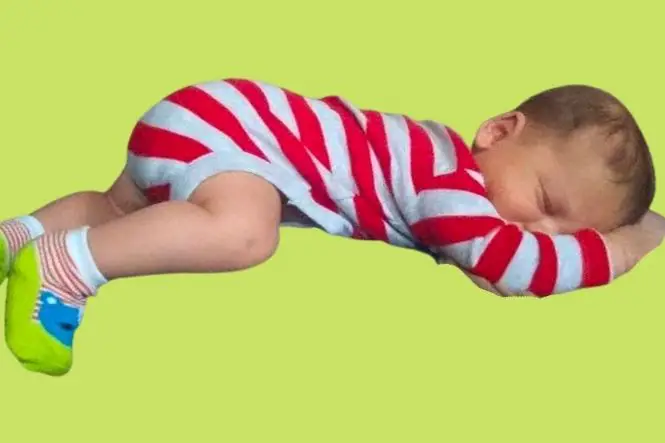As your baby gets older, they need less and less sleep–this means more time for play and learning! Changing a baby’s sleep habits can be challenging though and it’s important to know how to transition your baby from two naps to one. Making this change will take time–expect that the process of going down to one nap a day will take at least 4-6 weeks.
When your baby makes the change to one long afternoon nap, this frees up your morning to go on excursions with your child. While before they would only be awake for a couple of hours before needing their morning nap, now you can take advantage of the five or so hours to take your baby out to explore their town! And the two- or three-hour afternoon nap that follows is a welcome break for parents and provides a good chunk of time to get things done.
Every child is different when it comes to their sleep requirements but there are some general guidelines you can follow when it comes to making the transition to one nap. Your baby will show you signs that they are ready to make the change. While your baby is getting used to napping only once a day, you’ll want to keep her stimulated during the mornings and avoid long car rides or stroller walks as these can cause your baby to fall asleep.
Table of Contents
How Do You Know When A Baby Is Ready For One Nap?
It can be exciting to think about transitioning your baby from two naps to one but it’s important that you don’t do so before your child is ready. If you start this change too early, you will likely have a tired, grumpy baby on your hands with a rather disrupted sleep schedule. There are some signs you can look for to determine if your baby is ready to make the transition to one nap a day.
One sign that your baby is ready to drop down to one nap is if they are refusing their second nap. Now, most babies will occasionally refuse to sleep in the afternoon or may even have several days in a row during teething when they don’t nap twice a day. To make the transition, your child should be showing continued refusal of afternoon naps for at least two weeks.
If your baby is waking up earlier in the morning, this can also be a signal that it is time to move to one nap. Similarly, when your baby has a hard time falling asleep at night or continually stays up later, these are also signs that you can nix the afternoon nap. These are all examples of ways that your baby is telling you that she no longer needs as much sleep as she once did.
What Age Do Babies Drop From Two Naps To One?
The age at which babies transition down to one nap a day varies from child to child and depends on several factors. The majority of babies will drop their afternoon nap by the time they are 18 months old, though some will continue napping twice a day until they are two years old. Other factors such as weight, feeding habits, activity level, and medical issues can all affect when your baby makes this transition.
Generally, babies under a year old are too young to have just one nap a day–wait until your baby is at least 12 months old and showing signs that they are ready. For most children, this will happen around the 15-month mark but pay attention to their sleeping habits to determine their readiness. The amount of sleep that a baby needs changes a lot during the first two years–some newborns will sleep as much as 20 hours a day and by the time they are 18 months may only be sleeping 11 hours each day.
Some babies that have higher levels of physical activity will continue with two naps for longer. If you have a very busy baby that is always crawling, walking, running, and jumping, they will probably require more sleep than a less active child. However, some babies are very active but transition to one nap quite easily–a reminder that every child is unique and has their own needs.
What To Expect When Transitioning From Two Naps To One
The main thing to remember when making the change from two naps a day to only one is that you will need a lot of patience! Changing sleep patterns is challenging for the baby as well as for the parents. Just know that this stage will not last forever and that the more consistent you are, the easier the process will go overall.
Ideally, your baby will be napping in the middle of the day–for most people, this ends up being around 12:00 or 12:30. Babies who have just one nap a day tend to sleep for two or three hours, which means they will be waking anywhere from 2:00 to 3:30. You may find that your baby requires an earlier bedtime when they just have one nap a day.
The best way to make this transition is to do so gradually by pushing the morning nap ahead by 15 to 30 minutes. For example, if your baby typically naps at 10:00, put them down around 10:15 or 10:30–do this for at least two weeks, then bump it ahead again by another 15 to 30 minutes. Continue moving their nap time until you reach 12:00 or 12:30.
How Long Does It Take To Transition To One Nap?
You can expect the transition from two naps a day to one to take a minimum of four weeks. Some babies will adjust fairly quickly to a new sleep schedule while others will struggle for a longer period of time to get used to only one nap. There are some things you can do to make this transition easier for both baby and parents.
Taking a gradual approach to the transition tends to be easier on everyone than abruptly changing the sleep schedule. Some parents will choose to go right from two naps to one afternoon nap–for example, one day the child goes down for naps at 10:00 and 2:30 and the next day they nap at 12:00. While this approach doesn’t work best for most families, it often happens in childcare centers when babies move up to the toddler room.
Parents can help their child adjust to the transition by being patient and consistent–expect that your toddler may be more irritable. Just as adults tend to get grumpy when they have a change in their sleep schedule, babies and children feel the same way. Hang in there and you will get to the point where one nap a day is the norm.
Final Thoughts
Sleep is an integral part of infant and child development–healthy sleep routines impact every aspect of their growth and health. From birth through to the preschool years, your child’s sleep requirements will change drastically. Paying attention to your toddler’s habits and cues will help you to know when they are ready to make the change to one nap a day.






